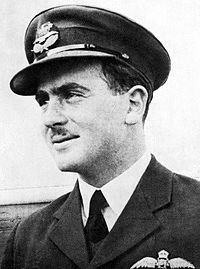Bill Newton Military person
William Ellis (Bill) Newton, VC (8 June 1919 – 29 March 1943) was an Australian recipient of the Victoria Cross, the highest decoration for gallantry in the face of the enemy that can be awarded to a member of the British and Commonwealth armed forces. He was honoured for his actions as a bomber pilot in Papua New Guinea during March 1943 when, despite intense anti-aircraft fire, he pressed home a series of attacks on the Salamaua Isthmus, the last of which saw him forced to ditch his aircraft in the sea. Newton was still officially posted as missing when the award was made in October 1943. It later emerged that he had been taken captive by the Japanese, and executed by beheading on 29 March.Raised in Melbourne, Newton excelled at sport, playing cricket at youth state level. He joined the Citizen Military Forces in 1938, and enlisted in the Royal Australian Air Force (RAAF) in February 1940. Described as having the dash of "an Errol Flynn or a Keith Miller", Newton served as a flying instructor in Australia before being posted to No. 22 Squadron, which began operating Boston light bombers in New Guinea late in 1942. Having just taken part in the Battle of the Bismarck Sea, he was on his fifty-second mission when he was shot down and captured. Newton was the only Australian airman to receive a Victoria Cross for action in the South West Pacific theatre of World War II, and the sole Australian to be so decorated while flying with an RAAF squadron.
Search
Military person
| allegiance | Australia |
|---|---|
| award | |
| military operations | |
| military branch | |
| military unit | |
| service start | 1938 |
| service end | 1943 |
